44 Prepare Flexible Budgets
Patty Graybeal
A company makes a budget for the smallest time period possible so that management can find and adjust problems to minimize their impact on the business. Everything starts with the estimated sales, but what happens if the sales are more or less than expected? How does this affect the budget? What adjustments does a company have to make in order to compare the actual numbers to budgeted numbers when evaluating results? If production is higher than planned and has been increased to meet the increased sales, expenses will be over budget. But is this bad? To account for actual sales and expenses differing from budgeted sales and expenses, companies will often create flexible budgets to allow budgets to fluctuate with future demand.
Flexible Budgets
A flexible budget is one based on different volumes of sales. A flexible budget flexes the static budget for each anticipated level of production. This flexibility allows management to estimate what the budgeted numbers would look like at various levels of sales. Flexible budgets are prepared at each analysis period (usually monthly), rather than in advance, since the idea is to compare the operating income to the expenses deemed appropriate at the actual production level.
Big Bad Bikes is planning to use a flexible budget when they begin making trainers. The company knows its variable costs per unit and knows it is introducing its new product to the marketplace. Its estimations of sales and sales price will likely change as the product takes hold and customers purchase it. Big Bad Bikes developed a flexible budget that shows the change in income and expenses as the number of units changes. It also looked at the effect a change in price would have if the number of units remained the same. The expenses that do not change are the fixed expenses, as shown in (Figure).
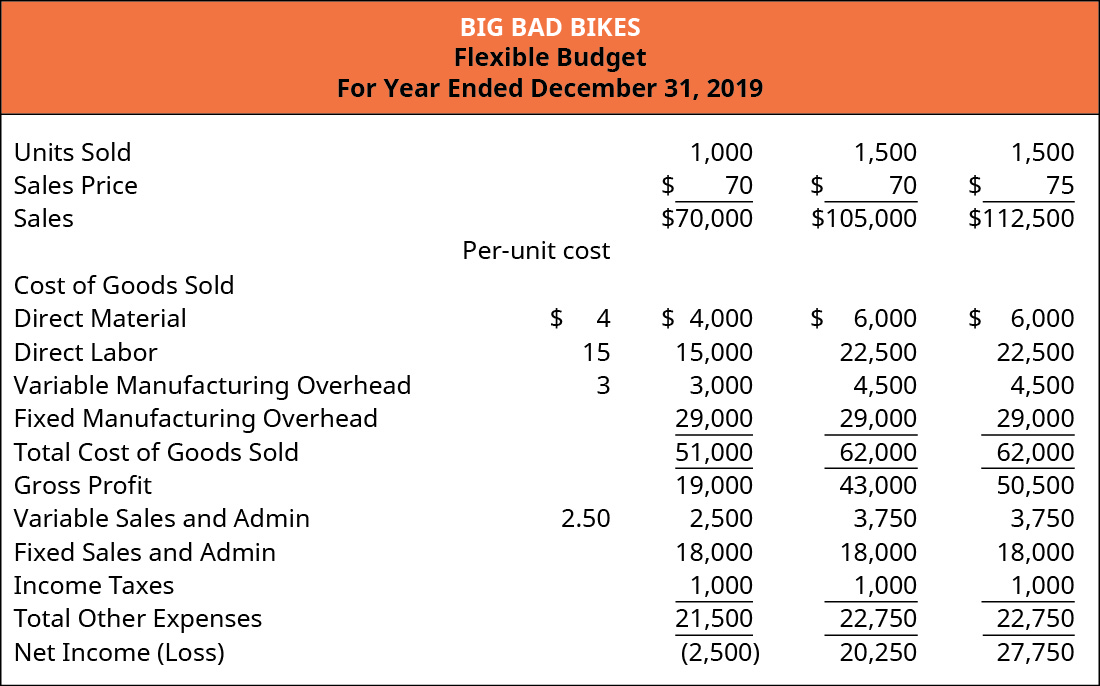
Static versus Flexible Budgets
A static budget is one that is prepared based on a single level of output for a given period. The master budget, and all the budgets included in the master budget, are examples of static budgets. Actual results are compared to the static budget numbers as one means to evaluate company performance. However, this comparison may be like comparing apples to oranges because variable costs should follow production, which should follow sales. Thus, if sales differ from what is budgeted, then comparing actual costs to budgeted costs may not provide a clear indicator of how well the company is meeting its targets. A flexible budget created each period allows for a comparison of apples to apples because it will calculate budgeted costs based on the actual sales activity.
For example, (Figure) shows a static quarterly budget for 1,500 trainers sold by Big Bad Bikes. The budget will change if there are more or fewer units sold.
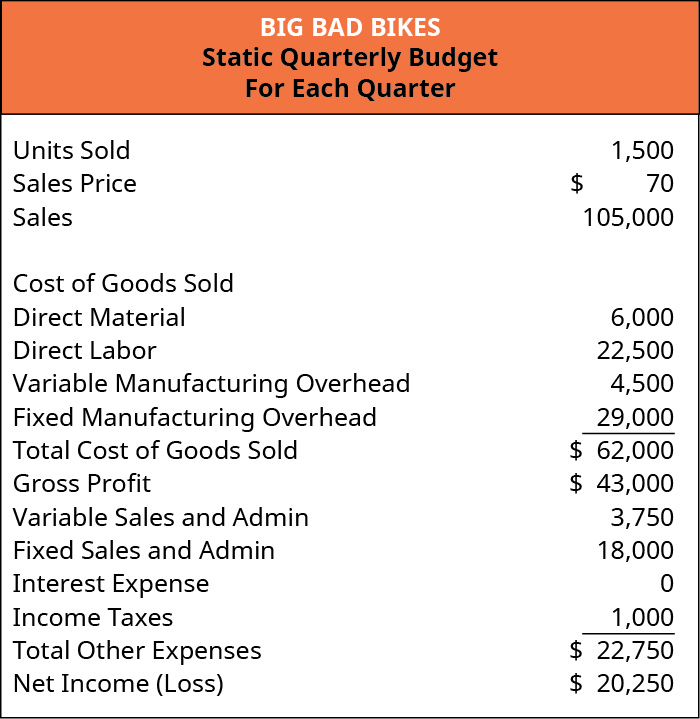
Budget with Varying Levels of Production
Companies develop a budget based on their expectations for their most likely level of sales and expenses. Often, a company can expect that their production and sales volume will vary from budget period to budget period. They can use their various expected levels of production to create a flexible budget that includes these different levels of production. Then, they can modify the flexible budget when they have their actual production volume and compare it to the flexible budget for the same production volume. A flexible budget is more complicated, requires a solid understanding of a company’s fixed and variable expenses, and allows for greater control over changes that occur throughout the year. For example, suppose a proposed sale of items does not occur because the expected client opted to go with another supplier. In a static budget situation, this would result in large variances in many accounts due to the static budget being set based on sales that included the potential large client. A flexible budget on the other hand would allow management to adjust their expectations in the budget for both changes in costs and revenue that would occur from the loss of the potential client. The changes made in the flexible budget would then be compared to what actually occurs to result in more realistic and representative variance. This ability to change the budget also makes it easier to pinpoint who is responsible if a revenue or cost target is missed.
Big Bad Bikes used the flexible budget concept to develop a budget based on its expectation that production levels will vary by quarter. By the fourth quarter, sales are expected to be strong enough to pay back the financing from earlier in the year. The budget shown in (Figure) illustrates the payment of interest and contains information helpful to management when determining which items should be produced if production capacity is limited.
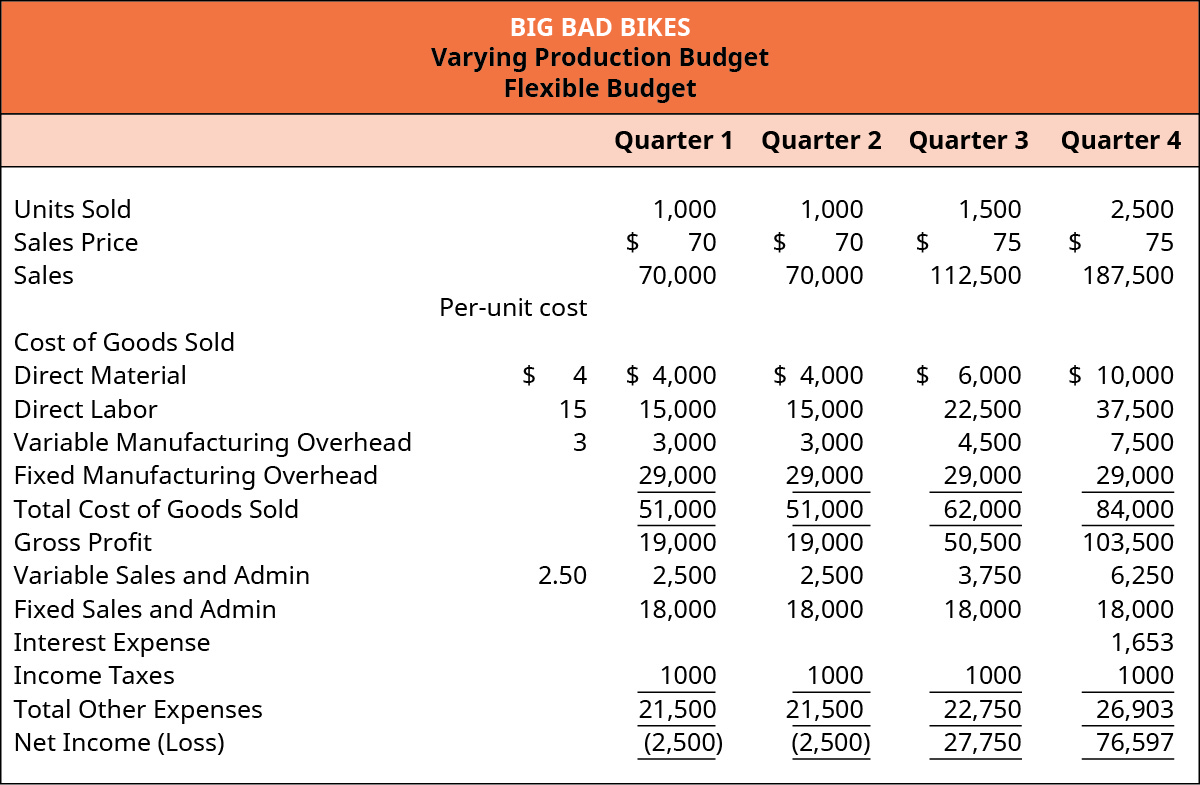
The ability to provide flexible budgets can be critical in new or changing businesses where the accuracy of estimating sales or usage my not be strong. For example, organizations are often reporting their sustainability efforts and may have some products that require more electricity than other products. The reporting of the energy per unit of output has sometimes been in error and can mislead management into making changes that may or may not help the company. For example, based on the energy per unit reported, management may decide to change the product mix, the amount that is outsourced, and/or the amount that is produced.1 If the energy output isn’t correct, the decisions may be wrong and create an adverse impact on the budget.
In theory, a flexible budget is not difficult to develop since the variable costs change with production and the fixed costs remain the same. However, planning to meet an organization’s goals can be very difficult if there are not many variable costs, if the cash inflows are relatively fixed, and if the fixed costs are high. For example, this article shows some large U.S. cities are faced with complicated budgets because of high fixed costs.
Key Concepts and Summary
- A master budget and related budgets are prepared as static budgets for the estimated level of activity.
- A flexible budget adjusts the budgets for various levels of activity and allows for the actual results to be evaluated at the actual volume of activity.
(Figure)Which budget evaluates the results of operations at the actual level of activity?
- capital budget
- cash budget
- flexible budget
- static budget
C
(Figure)What is the main difference between static and flexible budgets?
- The fixed manufacturing overhead is adjusted for units sold in the flexible budget.
- The variable manufacturing overhead is adjusted in the static budget.
- There is no difference between the budgets.
- The variable costs are adjusted in a flexible budget.
(Figure)A company has prepared the operating budget and the cash budget. It is now preparing the budgeted balance sheet. Identify the document that contains each of these balances.
- cash
- accounts receivable
- finished goods inventory
- accounts payable
- equipment purchases
A. cash budget; B. cash receipts budget; C. production budget; D. cash payments schedule; E. capital assets budget
(Figure)Fill in the blanks: A flexible budget summarizes _______ and _______ for various volume levels by adjusting the _______ costs for the various levels of activities. The _______ costs remain the same for all levels of activities.
(Figure)What information is included in the capital asset budget?
This budget is the plan for the purchase and disposal of plant assets and lists the estimated dollar amounts for each.
(Figure)Cold X, Inc. uses this information when preparing their flexible budget: direct materials of $2 per unit, direct labor of $3 per unit, and manufacturing overhead of $1 per unit. Fixed costs are $35,000. What would be the budgeted amounts for 20,000 and 25,000 units?
(Figure)Using the provided budgeted information for production of 10,000 and 15,000 units, prepare a flexible budget for 17,000 units.

(Figure)Judge’s Gavel uses this information when preparing their flexible budget: direct materials of $3 per unit, direct labor of $2.50 per unit, and manufacturing overhead of $1.25 per unit. Fixed costs are $49,000. What would be the budgeted amounts for 33,000 and 35,000 units?
(Figure)Using the following budgeted information for production of 5,000 and 12,000 units, prepare a flexible budget for 9,000 units.

(Figure)Prepare a flexible budgeted income for 120,000 units using the following information from a static budget for 100,000 units:
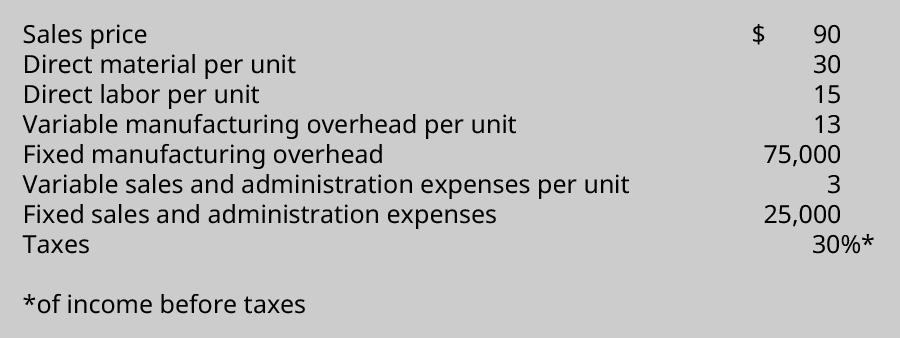
(Figure)Before the year began, the following static budget was developed for the estimated sales of 100,000. Sales are sluggish and management needs to revise its budget. Use this information to prepare a flexible budget for 80,000 and 90,000 units of sales.
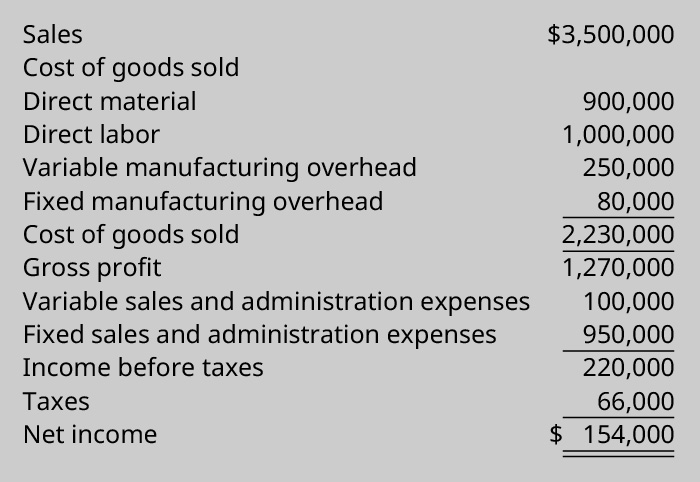
(Figure)Caribbean Hammocks currently sells 75,000 units at $50 per unit. Its expenses are:
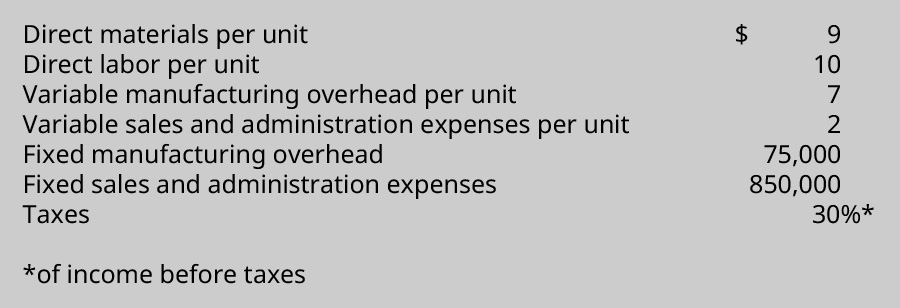
Management believes it can increase sales by 5,000 units for every $5 decrease in sales price. It also believes the additional sales will allow a decrease in direct material of $1 for each additional 5,000 units. Prepare a flexible budgeted income statement for 75,000-, 80,000-, and 85,000-unit sales.
(Figure)Total Pop’s data show the following information:

New machinery will be added in April. This machine will reduce the labor required per unit and increase the labor rate for those employees qualified to operate the machinery. Finished goods inventory is required to be 20% of the next month’s requirements. Direct material requires 2 pounds per unit at a cost of $3 per pound. The ending inventory required for direct materials is 15% of the next month’s needs. In January, the beginning inventory is 3,000 units of finished goods and 4,470 pounds of material. Prepare a production budget, direct materials budget, and direct labor budget for the first quarter of the year.
(Figure)Identify the document that contains the information listed in these lines from the budgeted balance sheet shown.
- Cash
- Accounts receivable
- Raw materials inventory
- Computers
- Accounts payable
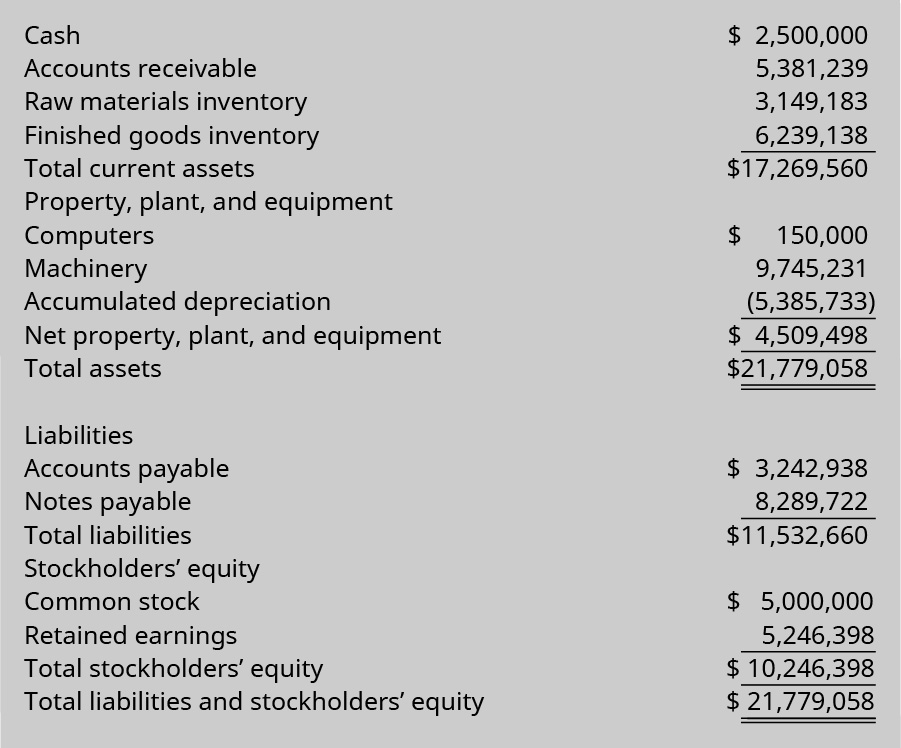
(Figure)Prepare a flexible budgeted income statement for 47,000 units using the following information from a static budget for 45,000 units:
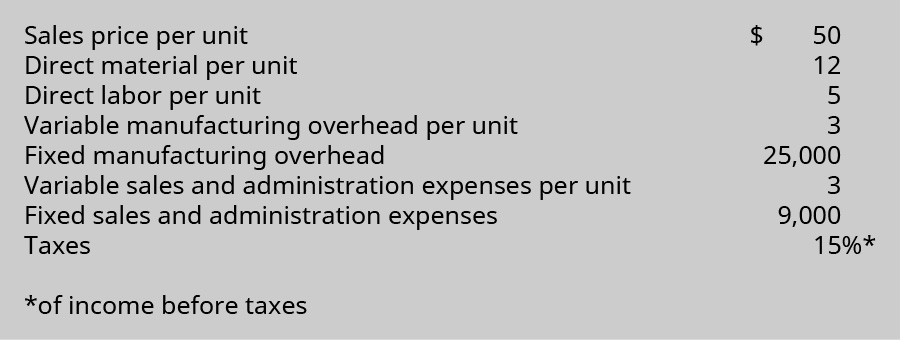
(Figure)Before the year began, the following static budget was developed for the estimated sales of 50,000. Sales are higher than expected and management needs to revise its budget. Prepare a flexible budget for 100,000 and 110,000 units of sales.
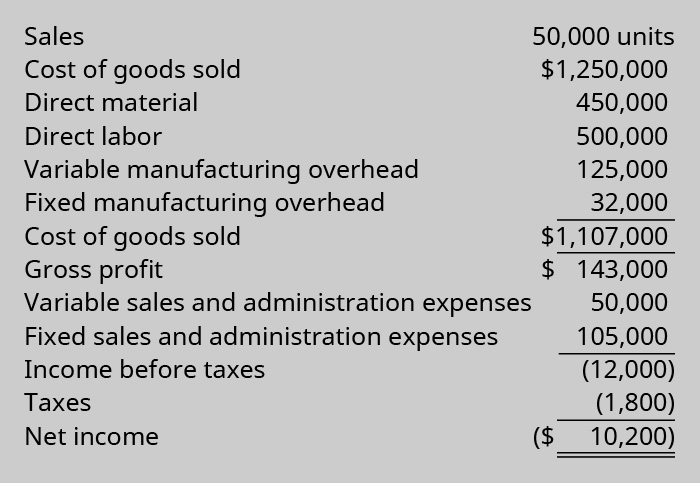
(Figure)Artic Camping Gear’s currently sells 35,000 units at $73 per unit. Its expenses are as follows:
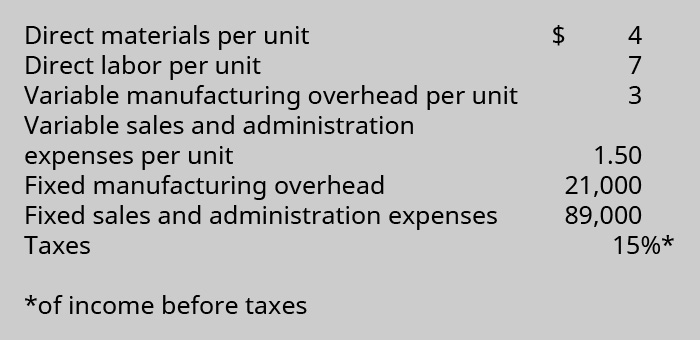
Management believes it can increase sales by 2,000 units for every $5 decrease in sales price. It also believes the additional sales will allow a decrease in direct material of $1 for each additional 2,000 units. Prepare a flexible budgeted income statement for 35,000-, 37,000-, and 39,000-unit sales.
(Figure)Fruit Tea’s data show the following information:

New machinery will be added in October. This machine will reduce the labor required per unit and increase the labor rate for those employees qualified to operate the machinery. Finished goods inventory is required to be 20% of the next month’s requirements. Direct material requires 2.5 pounds per unit at a cost of $5 per pound. The ending inventory required for direct materials is 20% of the next month’s needs. In August, the beginning inventory is 3,750 units of finished goods and 13,125 pounds of materials. Prepare a production budget, direct materials budget, and direct labor budget for the first quarter of the year.
(Figure)Identify the document that contains the information listed in these lines from the budgeted balance sheet shown.
- Accounts receivable
- Finished goods inventory
- Machinery
- Accumulated depreciation
- Notes payable
- Common stock
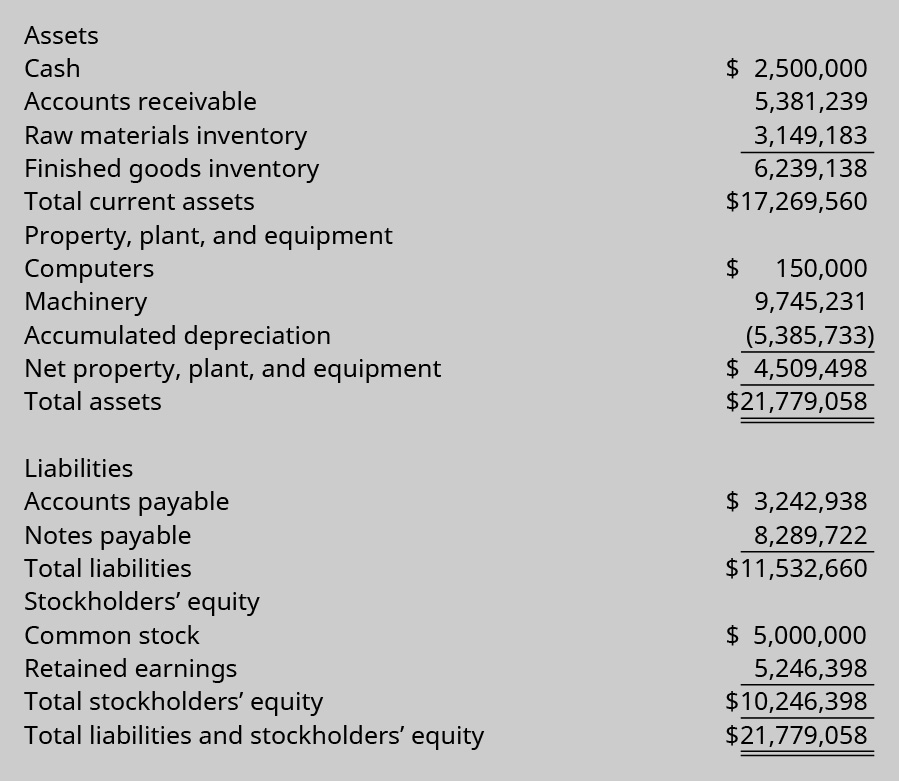
(Figure)The management of Hess, Inc., is developing a flexible budget for the upcoming year. It was not pleased with the small amount of net income the budget showed at all sales levels and is contemplating using a less expensive material. This action reduces direct material cost by $1 per unit. What would be the effects on financial statements and a flexible budget if management takes this approach? Are there other factors that need to be considered?
(Figure)When would a static budget be effective in evaluating a manager’s performance?
Footnotes
- 1 Jon Bartley, et al. “Using Flexible Budgeting to Improve Sustainability Measures.: American Institute of CPAs. Jan. 23, 2017. https://www.aicpa.org/interestareas/businessindustryandgovernment/resources/sustainability/improvesustainabilitymeasures.html
Glossary
- flexible budget
- budget based on different levels of activity
- static budget
- budget prepared for a single level of activity for a given period

